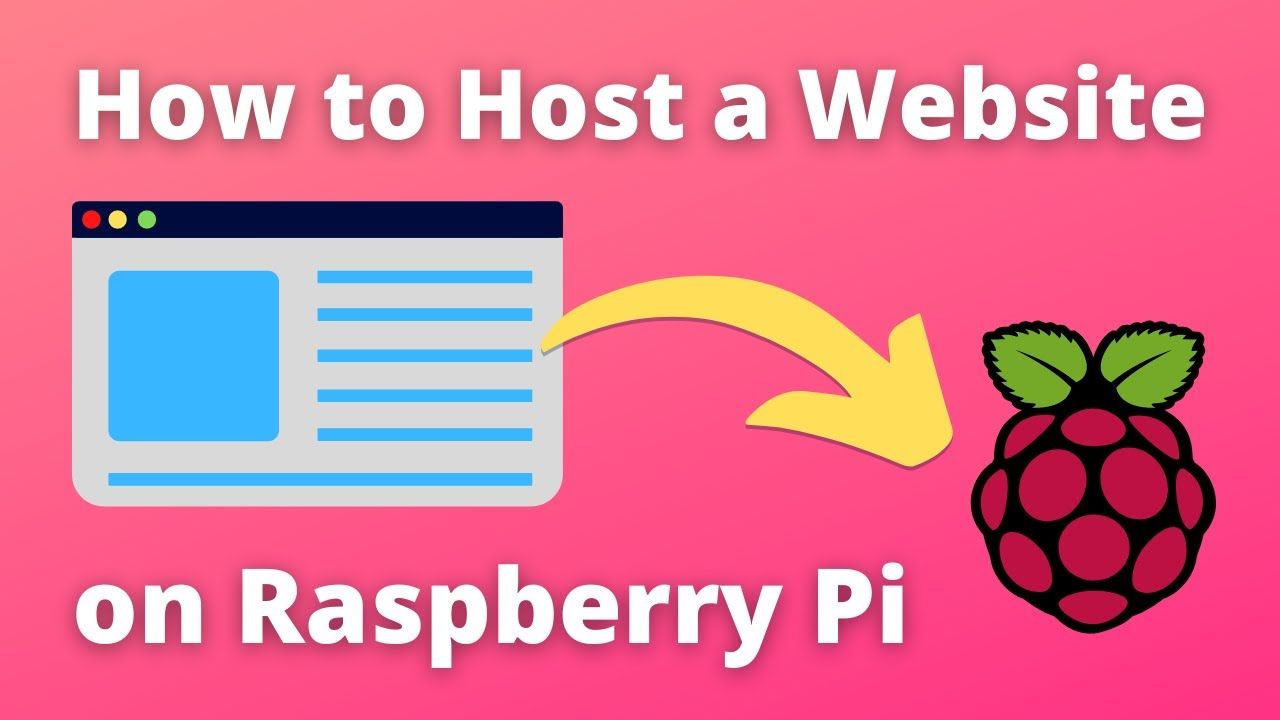How to Host a Website on Raspberry Pi

A Raspberry Pi is a small, affordable, and power-efficient computer that can easily be used as a web server. By installing a web server software on a Raspberry Pi, you can host websites from your home, office, or anywhere else with a stable internet connection. In this blog, we will go over the steps to set up a Raspberry Pi as a web server and also discuss its pros and cons, as well as comparing it with hosting websites on cloud platforms like Amazon Web Services (AWS) or Google Cloud.
Setting up a Raspberry Pi as a web server
To set up a Raspberry Pi as a web server, you will need the following:
- A Raspberry Pi board (preferably the latest version)
- A microSD card (8GB or higher)
- A power supply for the Raspberry Pi
- A router with an internet connection
- A computer with an SD card reader
Once you have all the required hardware, follow these steps:
- Download the latest version of the Raspberry Pi OS (previously called Raspbian) from the official website and install it on the microSD card using a software like Etcher.
- Insert the microSD card into the Raspberry Pi and connect it to your router using an Ethernet cable.
- Connect the power supply to the Raspberry Pi and turn it on.
- Find the IP address of the Raspberry Pi using your router’s management interface or by using a command like
ifconfigon the Raspberry Pi terminal. - SSH into the Raspberry Pi using the IP address and the default username and password (
piandraspberry). - Update the Raspberry Pi OS by running the following commands:
sudo apt update && sudo apt upgrade
- Install a web server software on the Raspberry Pi. There are several options to choose from, including Apache, Nginx, and Lighttpd. In this example, we will use Apache. To install Apache, run the following command:
sudo apt install apache2
- Test if the Apache web server is running by opening a web browser on your computer and going to
http://<Raspberry Pi's IP address>. You should see the default Apache web page. - To host your own website, create a new folder inside the
/var/www/htmldirectory and place your website files in it. Make sure to give proper permissions to the folder and its contents. - You can now access your website from any device connected to the internet by going to
http://<Raspberry Pi's IP address>/<folder name>.

Pros and cons of using a Raspberry Pi as a web server
There are several benefits to using a Raspberry Pi as a web server, including:
- Low cost: A Raspberry Pi is much cheaper than a dedicated server, making it a cost-effective solution for small websites or personal projects.
- Low energy consumption: A Raspberry Pi uses very little power, making it an eco-friendly and energy-efficient option.
- Customizability: A Raspberry Pi is a fully functional Linux computer, allowing you to customize it to your specific needs and install any software you want.
However, there are also some drawbacks to consider:
- Limited resources: A Raspberry Pi has limited processing power, memory, and storage, making it less suitable for hosting resource-intensive websites or handling a large number of visitors.
- Stability: A Raspberry Pi is prone to malfunctions and crashes, especially if it is not properly cooled or if it is subjected to high load. This can lead to downtime and lost visitors.
- Security: A Raspberry Pi is vulnerable to cyber attacks, especially if it is not properly configured and kept up to date. It is important to take security measures, such as using a firewall, enabling HTTPS, and regularly applying updates and patches.

Comparison with hosting on cloud platforms
Hosting a website on a cloud platform like AWS or Google Cloud offers several advantages over using a Raspberry Pi, including:
- Scalability: Cloud platforms allow you to easily scale your website up or down depending on your needs, without the need to invest in additional hardware.
- Reliability: Cloud platforms have redundant servers and infrastructure, ensuring high uptime and availability for your website.
- Performance: Cloud platforms offer faster loading times and better performance, thanks to their powerful servers and advanced technologies like content delivery networks (CDNs).
- Security: Cloud platforms have advanced security measures in place, such as firewalls, intrusion detection, and data encryption, to protect your website and data.
However, hosting on a cloud platform also has some drawbacks:
- Cost: Cloud hosting can be more expensive than using a Raspberry Pi, especially for small websites or personal projects.
- Complexity: Cloud platforms can be complex and require technical expertise to set up and manage, especially for users with little experience.
- Dependency: Hosting on a cloud platform means you are dependent on the provider’s services, which can be disrupted by maintenance or outages.
In conclusion, using a Raspberry Pi as a web server can be a cost-effective and customizable solution for hosting small websites or personal projects. However, it has limitations in terms of resources, stability, and security, and may not be suitable for larger or more demanding websites. On the other hand, hosting on a cloud platform offers superior scalability, reliability, performance, and security, but at a higher cost and complexity. The best option will depend on your specific needs and requirements.

